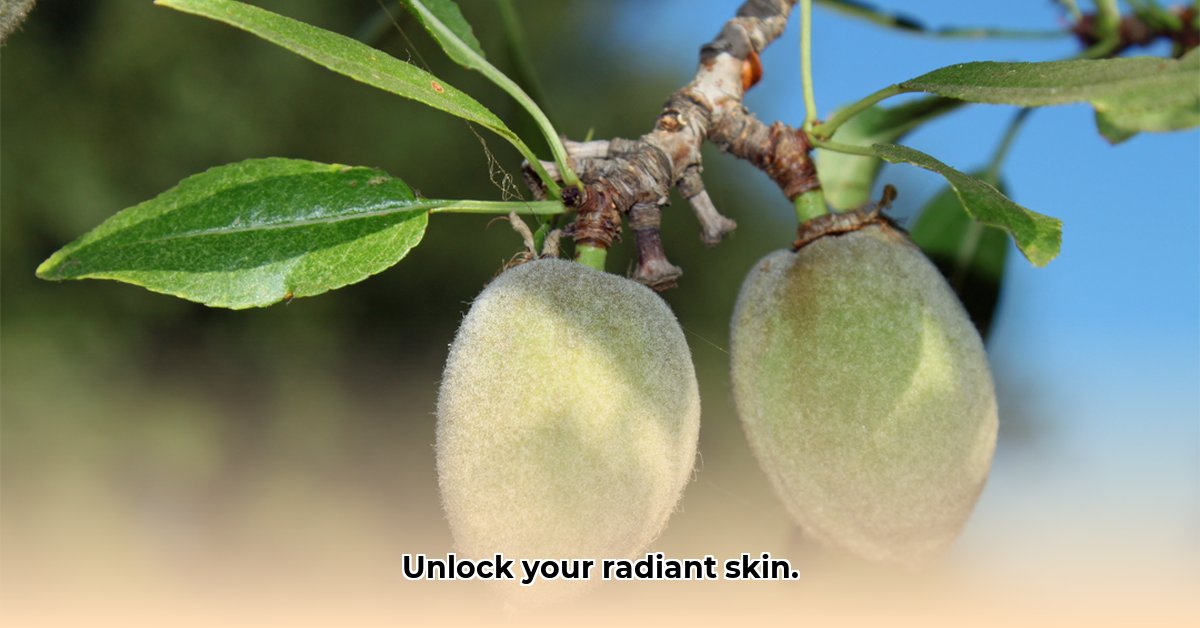Got almond skin and battling dark spots or an uneven complexion? This is your go-to guide! We’re diving deep into hyperpigmentation on almond skin, exploring causes, personalized skincare plans, and effective treatments to help you achieve that radiant, even-toned glow. For more on almond skin tones, see this helpful guide: Almond Skin Guide.
Almond Skin Tone and Hyperpigmentation: Your Expert Guide to Clearer Skin
Let’s break down understanding your skin, its unique needs, and what actionable steps you can take to address hyperpigmentation. You possess beautiful, medium-to-dark brown skin, often radiating a captivating warmth. Hyperpigmentation, those unwelcome dark spots, can sometimes overshadow your natural radiance. This guide is designed to help you understand why these spots appear and what you can do about it to get back your even-toned glow.
Decoding Almond Skin Tone: More Than Just a Shade
Almond skin boasts a lovely medium-to-dark brown complexion, reminiscent of the nut it’s named after. However, it’s more complex than a single color. What truly defines almond skin are its undertones – subtle hints of warmth or coolness that add depth and character.
- Warm Undertones: These complexions feature golden, olive, or yellow hues. They often tan easily and have a natural radiance.
- Cool Undertones: These almond skin tones have hints of blue, pink, or red.
These nuances significantly influence how your skin reacts to sunlight, skincare products, and even makeup. A one-size-fits-all skincare approach simply won’t work.
Compared to lighter skin tones, almond skin contains higher levels of melanin, the pigment responsible for skin color. Melanin provides natural sun protection, but also makes almond skin more susceptible to hyperpigmentation. Understanding these nuances helps you to refine your skincare approach and choose the right products.
Why Does Hyperpigmentation Happen on Almond Skin? Unmasking the Culprits
Your skin produces more melanin compared to lighter skin tones, affording a degree of natural protection against sunburn. But this heightened melanin production has a downside. Any skin irritation or injury – whether from sun exposure, acne inflammation, eczema flare-ups, or even hormonal shifts – can trigger melanin overproduction in that specific area, leading to those pesky dark spots. Think of it as your skin’s defense mechanism gone into overdrive.
These dark spots manifest in a few common forms, each with its own triggers and characteristics:
- Melasma: Often linked to hormonal changes (pregnancy, birth control pills, or hormone replacement therapy), it appears as symmetrical dark patches on the face, commonly on the cheeks, forehead, and upper lip.
- Post-inflammatory Hyperpigmentation (PIH): Develops after skin trauma like pimples, cuts, burns, insect bites, or harsh chemical peels. Inflammation triggers excess melanin, leaving a dark mark long after the initial injury has healed.
- Sunspots (Solar Lentigines): Resulting from cumulative sun exposure over time, these spots appear on sun-exposed areas like the face, hands, and chest. They are a sign of sun damage and can become more numerous with age.
- Lentigines: Similar to sunspots, but can also be caused by genetics and appear in areas not heavily exposed to the sun.
Did you know that studies estimate that up to 65% of people with darker skin tones experience hyperpigmentation? Recognizing the specific type of hyperpigmentation you’re dealing with is the first step toward effective treatment.
Your Step-by-Step Guide to a More Even Complexion: Unveiling Your Radiant Skin
Here’s a straightforward, yet comprehensive strategy to help you address hyperpigmentation and achieve a more even skin tone, incorporating the best practices for your unique skin type. This approach combines preventative measures with targeted treatments for optimal results.
Step 1: Sun Protection is Non-Negotiable! Your Daily Shield
Sun protection is the cornerstone of any hyperpigmentation treatment plan. Preventing further damage is paramount. Invest in a broad-spectrum sunscreen with an SPF of 30 or higher. Look for sunscreens that contain zinc oxide or titanium dioxide, as these provide physical barriers against the sun’s rays and are generally well-tolerated. Apply liberally every morning and diligently reapply every two hours, especially when outdoors, swimming, or sweating. Don’t forget often-neglected areas like your ears, neck, and the backs of your hands. This shields your skin from further damage and prevents existing dark spots from darkening. Remember, even on cloudy days, UV rays can penetrate the skin and contribute to hyperpigmentation.
Step 2: Gentle Cleansing—Keep it Simple, Keep it Kind
Avoid harsh cleansers that strip your skin’s natural oils, potentially exacerbating hyperpigmentation and causing irritation. Opt for a gentle, sulfate-free, non-comedogenic (pore-clogging) cleanser. Look for cleansers with soothing ingredients like aloe vera or chamomile. This ensures your skin is clean without causing further irritation or inflammation. Pat your skin dry with a soft towel instead of rubbing, as rubbing can further irritate the skin.
Step 3: Targeted Treatments—The Power Ingredients: Your Arsenal Against Dark Spots
Certain ingredients, when used consistently, can effectively brighten skin, fade dark spots, and prevent new ones from forming. Here’s a breakdown of some of the most effective options:
- Vitamin C: A potent antioxidant that brightens skin, evens tone, and combats free radical damage. Look for stable forms of Vitamin C, such as L-Ascorbic Acid or Sodium Ascorbyl Phosphate, and use it in the morning to protect your skin from environmental damage throughout the day. Studies suggest vitamin C derivatives are generally more efficacious.
- Niacinamide (Vitamin B3): Reduces inflammation, minimizes melanin production, and strengthens the skin barrier, preventing future dark spots. Clinical trials highlight niacinamide’s skin-brightening capabilities and its ability to reduce redness and blotchiness.
- Retinoids (Use with Caution!): Powerful ingredients increasing cell turnover, exfoliating the skin, and promoting collagen production for clearer, more even-toned skin. However, they can cause irritation, redness, and sun sensitivity, especially initially. Begin with a low concentration (such as 0.01% retinol), use only at night, and gradually increase frequency as tolerated. Always use sunscreen during the day when using retinoids. Consult your dermatologist before using retinoids, especially if you have sensitive skin or are pregnant or breastfeeding.
- Alpha Hydroxy Acids (AHAs): These exfoliating acids, such as glycolic acid and lactic acid, help to remove dead skin cells, revealing brighter, smoother skin underneath. They can also help to fade dark spots over time. Use AHAs with caution, as they can increase sun sensitivity. Always use sunscreen during the day when using AHAs.
- Azelaic Acid: Brightens skin by reducing inflammation and melanin production, making it a good option for sensitive skin or those with rosacea. Research supports azelaic acid’s use in treating hyperpigmentation and acne.
- Kojic Acid: A natural skin-lightening agent derived from fungi. It works by inhibiting melanin production. Kojic acid can be irritating for some people, so start with a low concentration and gradually increase as tolerated.
- Arbutin: A natural skin-brightening agent derived from the bearberry plant. It works by inhibiting melanin production and is generally well-tolerated.
Step 4: Hydration is Key – Keep Your Skin Happy and Healthy
Moisturizing is crucial! A well-hydrated skin barrier is more resilient and less prone to irritation, minimizing hyperpigmentation potential. Select a moisturizer tailored to your skin type – light and oil-free for oily skin; a richer, hydrating formula for dry skin. Look for moisturizers containing hyaluronic acid, ceramides, or glycerin, as these ingredients help to draw moisture into the skin and strengthen the skin barrier. Apply moisturizer immediately after cleansing and throughout the day as needed.
Step 5: Professional Help—When to Consult a Dermatologist: Your Partner in Skin Health
If home remedies aren’t yielding noticeable results or if you have stubborn hyperpigmentation, seek professional help. Dermatologists offer advanced treatments such as:
- Chemical peels: Exfoliate the skin, removing the top layer containing dark spots and stimulating collagen production. Different types of chemical peels are available, with varying strengths and ingredients. A dermatologist can determine the best type of peel for your skin type and the severity of your hyperpigmentation.
- Laser treatments: Target and fade dark pigments using intense light beams. Different types of lasers are used to treat hyperpigmentation, including Q-switched lasers and fractional lasers. Laser treatments can be effective, but they can also be expensive and may require multiple sessions.
- Microdermabrasion: A non-invasive procedure that exfoliates the skin by using a diamond-tipped wand to remove the top layer of dead skin cells. Microdermabrasion can help to improve skin tone and texture and fade dark spots.
- Prescription medications: Dermatologists may prescribe potent topical treatments like hydroquinone (which requires strict supervision due to potential side effects). Other prescription medications include tretinoin, a strong retinoid, and corticosteroids, which can reduce inflammation.
“Early intervention and a customized approach, including prescription topicals and professional treatments, often yield the best outcomes for managing hyperpigmentation in darker skin tones,” said [Dr. Shereene Idriss, MD], [Dermatologist] at [Idriss Dermatology].
- Plant-based Diet Colitis Remission: Success Stories - December 18, 2025
- Plant Based Diet Breast Cancer: Research-Based Benefits - December 16, 2025
- Plant-Based Diet Ulcerative Colitis Remission: Proven Benefits - December 15, 2025










